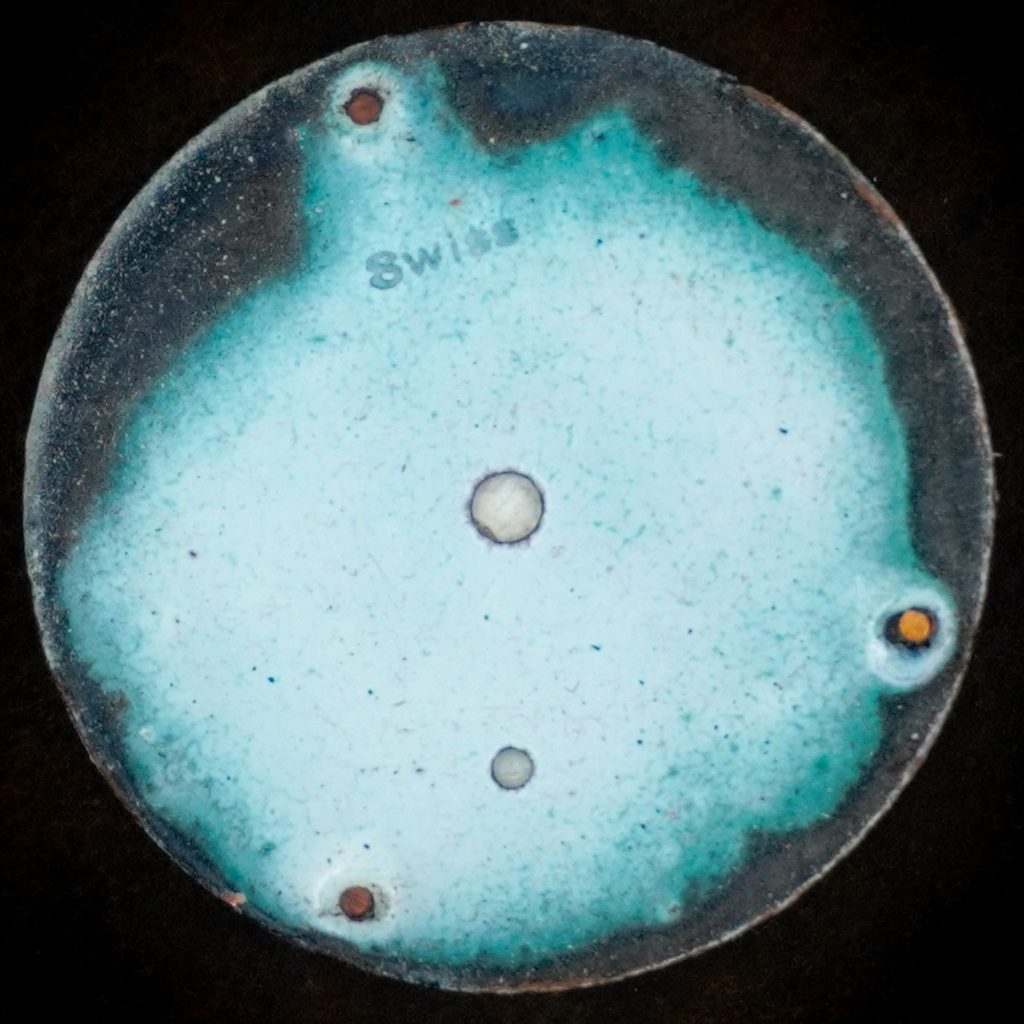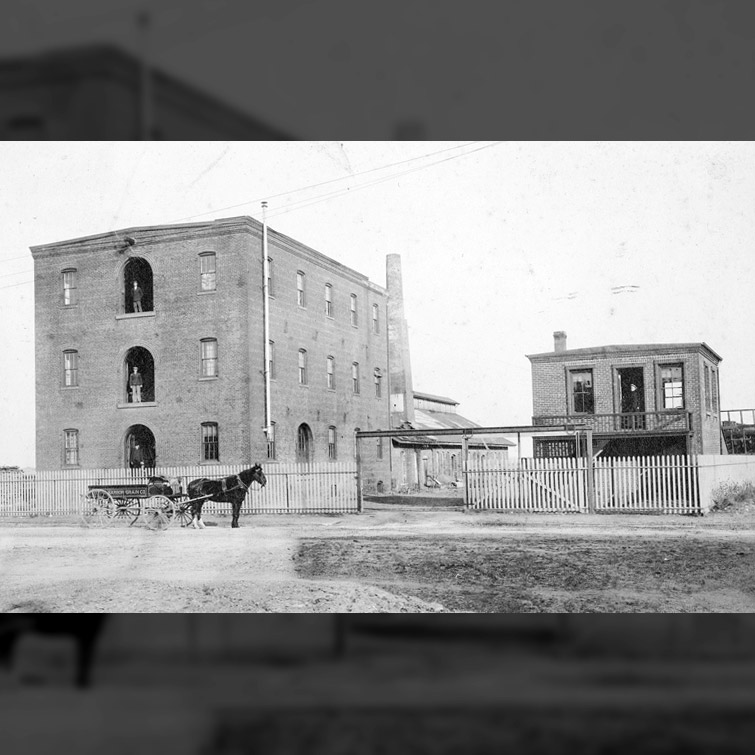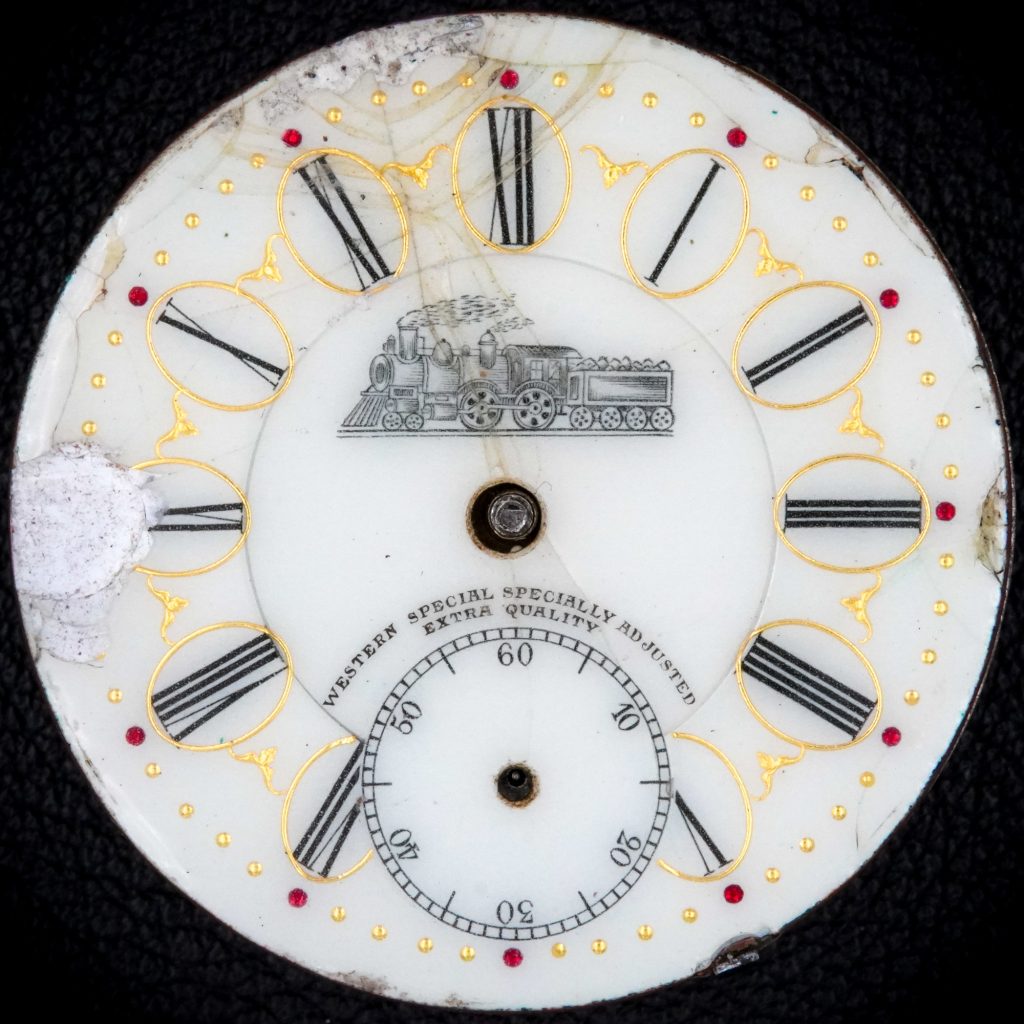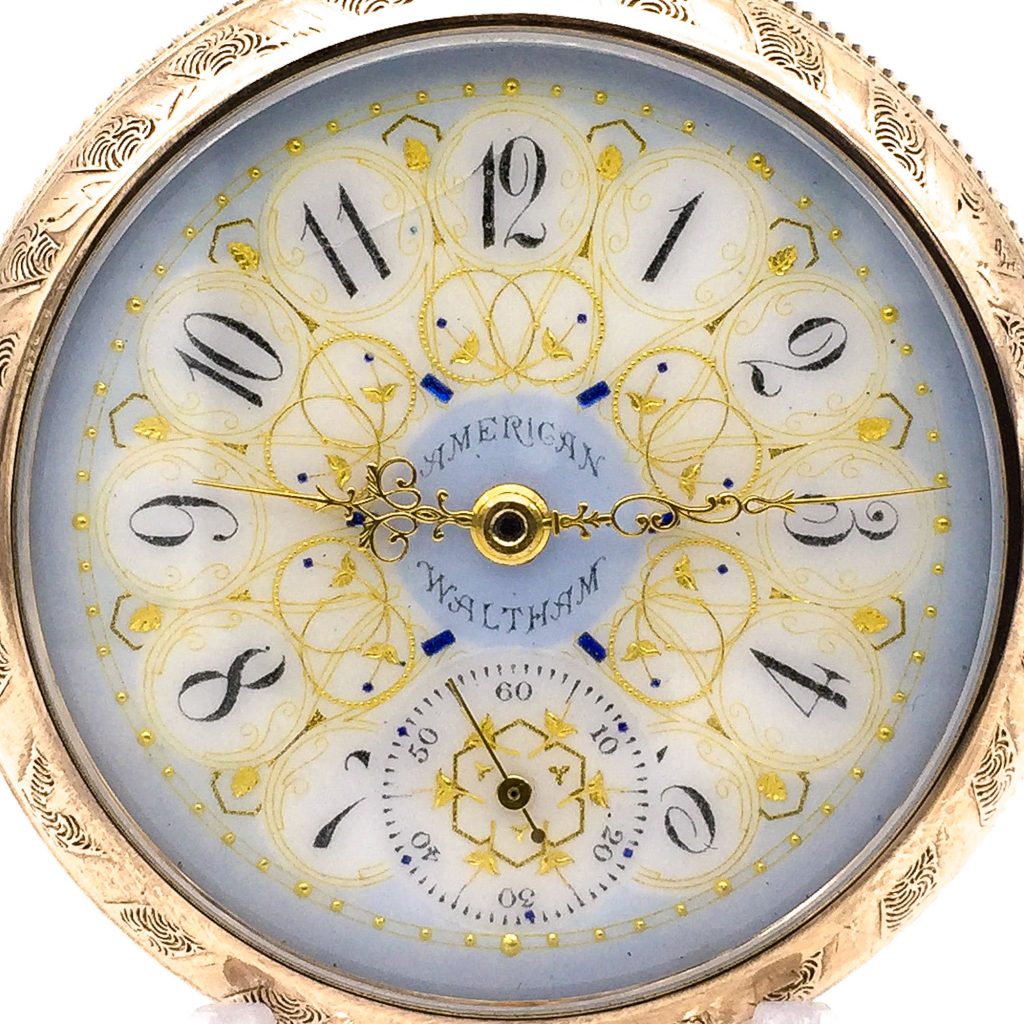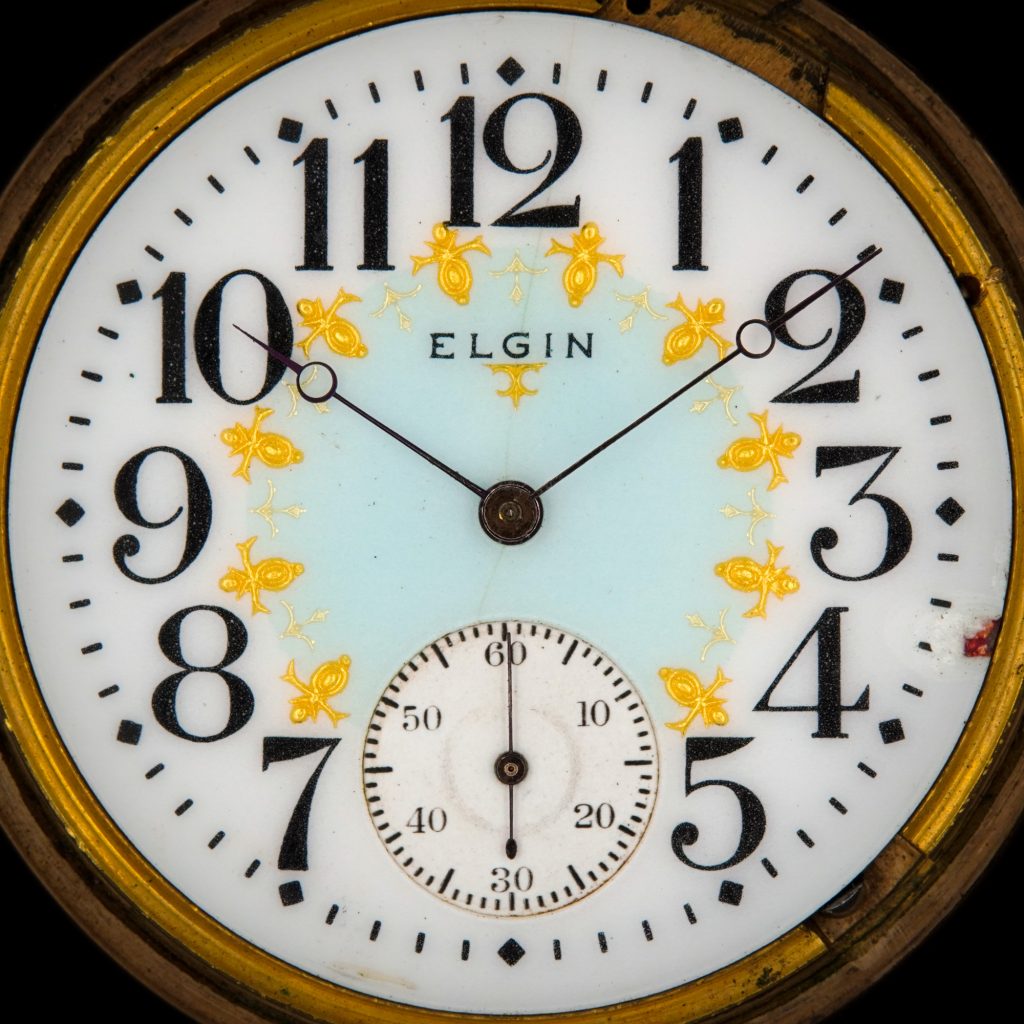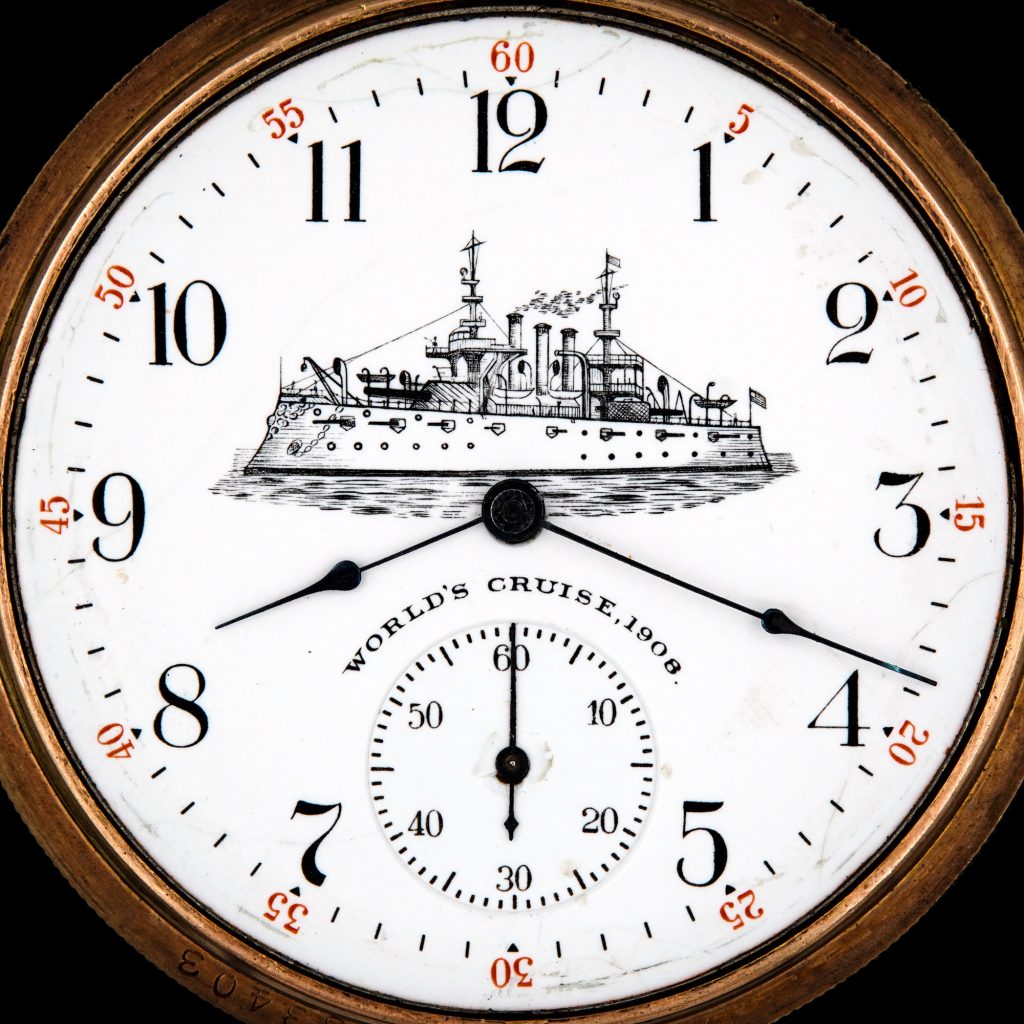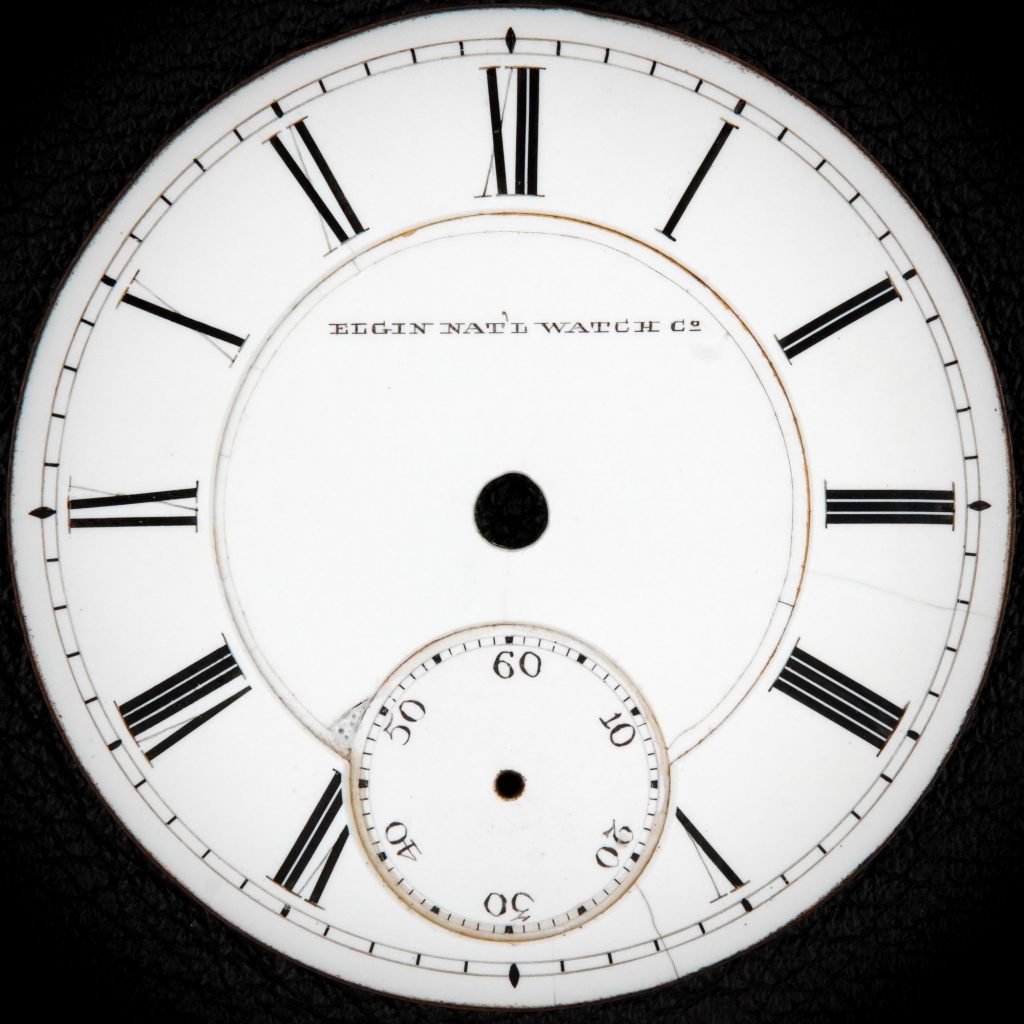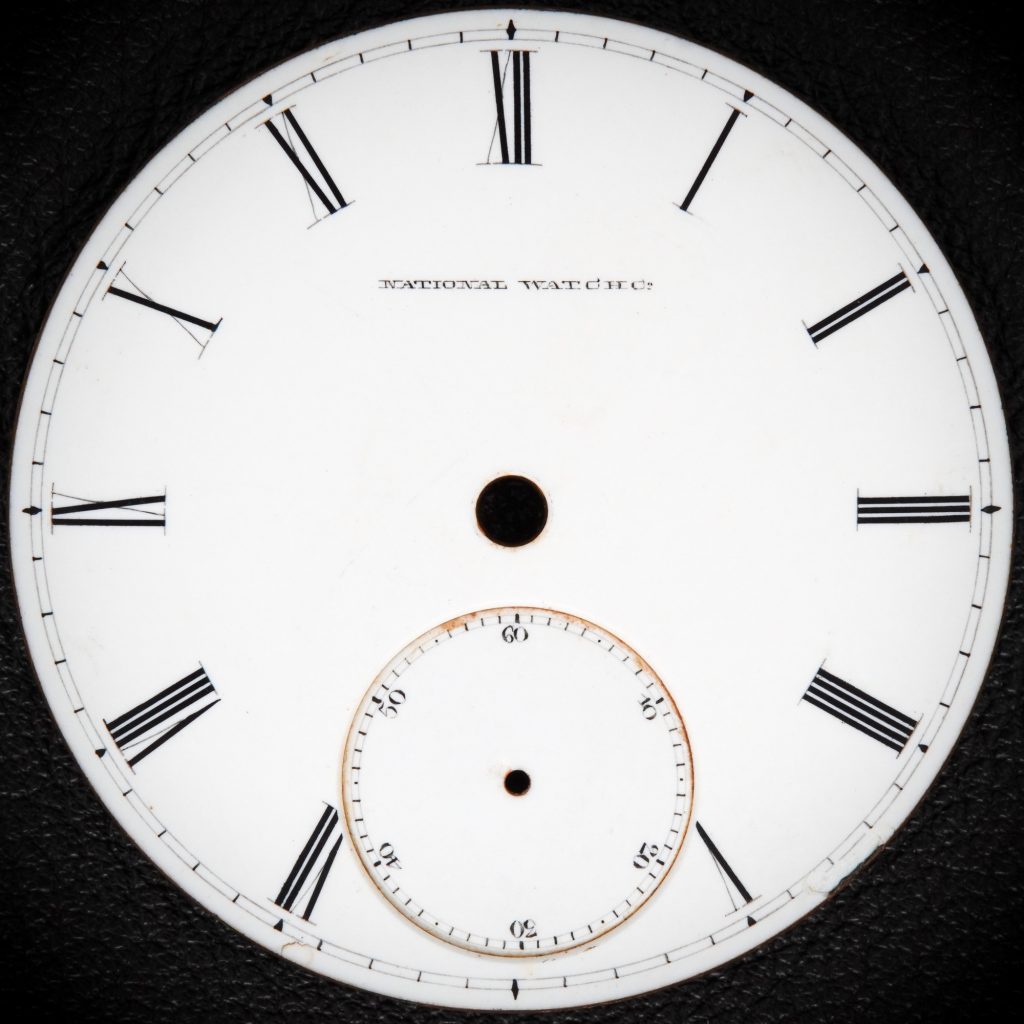Enamel
Pictured: The Eaton Dial Factory (2nd Floor of the Hampton Mills Building), c.1890s In March 1892, The Eaton Dial Manufacturing Company was organized with a capital stock of $7,000 at.
Pictured: “Western Special” Swiss Import Dial in the O’Hara Style, c.1900 By 1909, the O’Hara Waltham Dial Company was the last remaining independent dial manufacturing operation in America. Techniques developed.
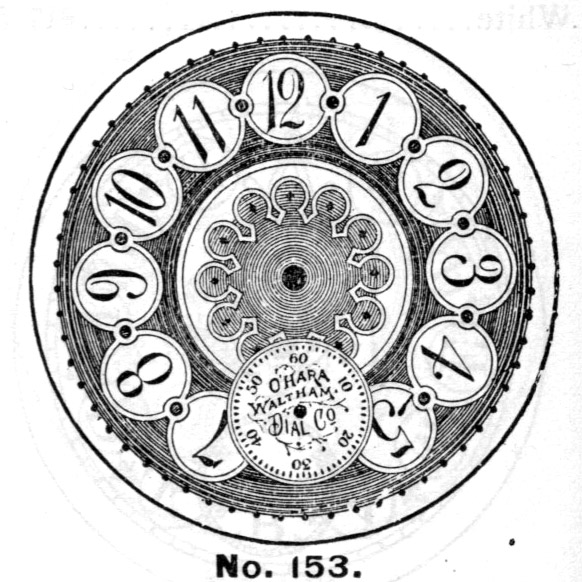
Pictured: American Waltham Blue/Gold Fancy Dial (Unmarked, Considered to be an O’Hara Dial), c.1894. In 1890, the Waltham Dial Company was organized to satisfy the demand for fashionable “fancy dials.”.
Pictured: Elgin Colored Enamel Dial with Gold Embellishments, c.1880s. The 1880s proved to be a pivotal decade for the manufacturing of watch dials. Experimentation with different methods led to innovative.
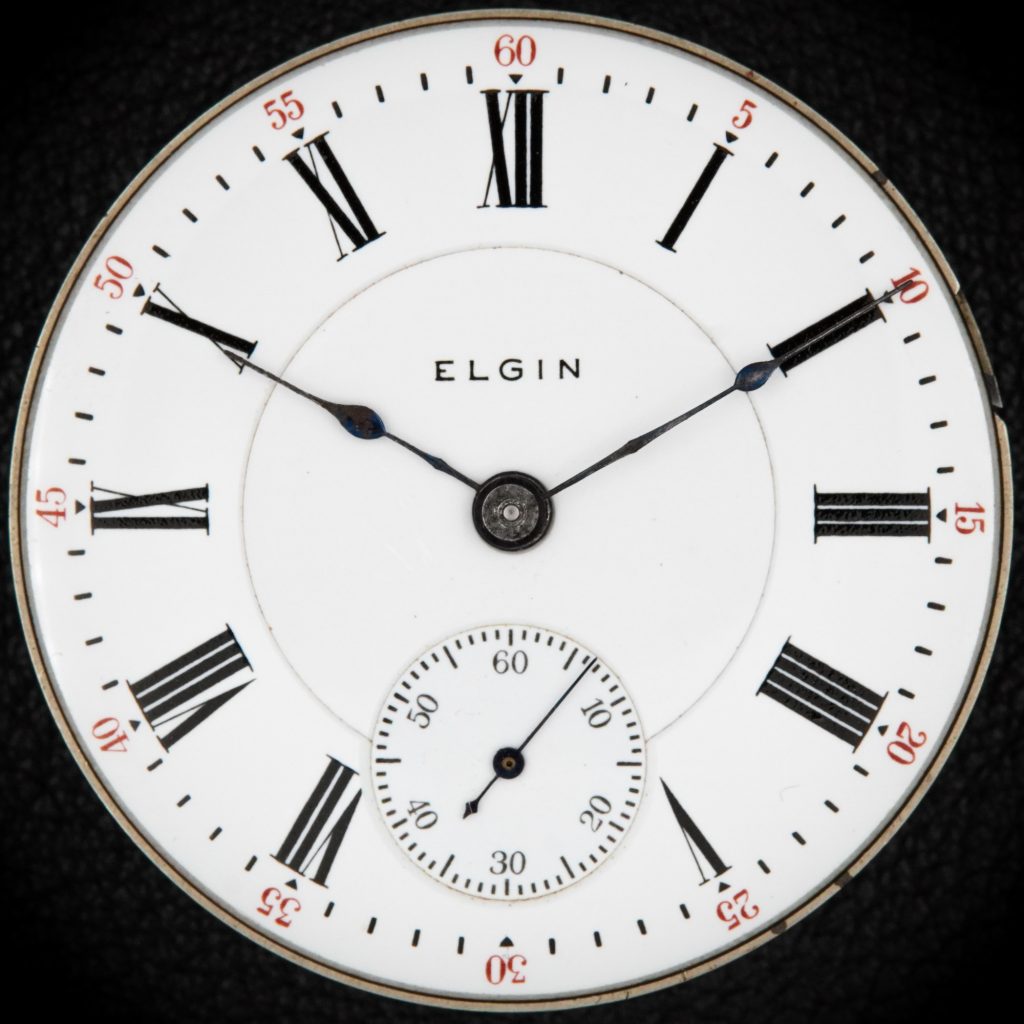
Pictured: c.1909 Watch Dial Commemorating The 1908 World’s Cruise, Depicting the USS Connecticut Battleship, Fitted on an Elgin Grade 291 Movement. Using newly-developed image transfer techniques, illustrative dials were also.
Pictured: Early Double-Sunk “Elgin Nat’l Watch Co.” Dial, c.1874 Early double-sunk dials produced at the Elgin factory are frequently marred by a mysterious circular crack around the inner perimeter of.

